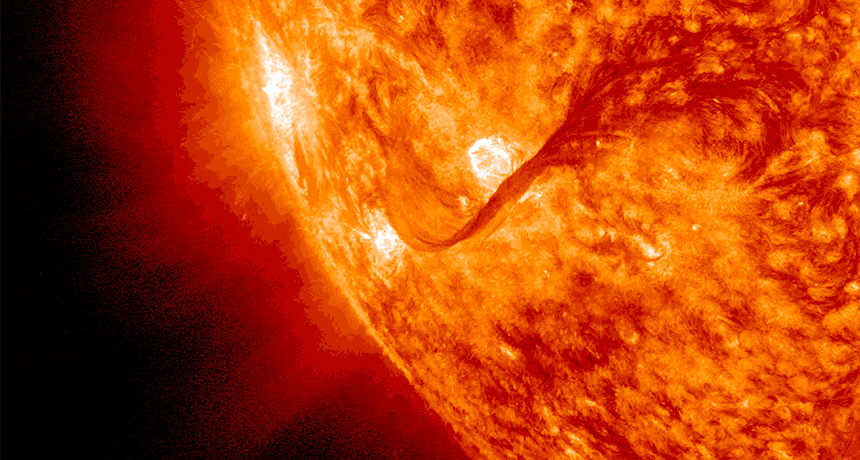Questions for ‘Space weather forecast: Big storms ahead’

Blame it on the sun. Extreme space weather events begin when a blob of plasma erupts from the sun and streams toward Earth.
NASA/Goddard Space Flight Center

Blame it on the sun. Extreme space weather events begin when a blob of plasma erupts from the sun and streams toward Earth.
NASA/Goddard Space Flight Center